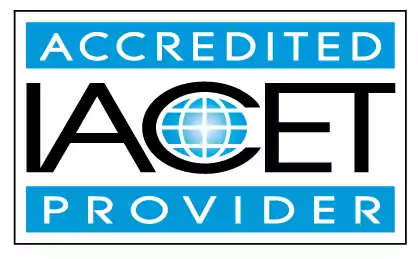Describe the steps teachers should take to identifying challenging behaviors.
Learn how to identify challenging behaviors in the classroom with these essential steps for teachers. Discover effective strategies to address these behaviors in early childhood education and child care centers.Trainings incorporating this outcome
CDA Subject Areas
Proficiency Level
Topic Areas
120 hours courses
102 hours courses
45 hours courses
24 hours courses
16 hours courses
6 hours courses
5 hours courses
3 hours courses
2 hours courses
Related Outcomes
- Describe the various ways teachers can address challenging behaviors in the classroom.
- Give examples of strategies teachers can use to communicate with parents regarding challenging behaviors.
- Identify appropriate practices for identify and demonstrate an children: Identify examples of appropriate activities for different ages
- Describe the steps to use when collaborative coaching with teachers are not a match.
- Identify appropriate practices for identify and demonstrate an children: Identify importance of individual planning
- Identify appropriate practices for identify and demonstrate an children: Teacher directed vs child directed
- List characteristics and behaviors for professional practice and behaviors as outlined in the NAEYC Code of Ethical Conduct.
- Define and identify common signs and behaviors of children and youth with ADHD.
- Identify the challenges and solutions for shared space environments
- Define and identify common signs and behaviors of children and youth with developmental disabilities.
- Define and identify common signs and behaviors of children and youth with Autism Spectrum Disorder.
- Describe strategies to encourage positive behaviors in the classroom.
- Define and identify common signs and behaviors of children and youth with anxiety.
- Identify strategies for training individuals with challenging personalities.
- Teachers will identify the important role parents and/or family members play in their child's education.
- Define and identify common signs and behaviors of children and youth with fragile x syndrome.
- Define and identify common signs and behaviors of children and youth with cerebral palsy.
- Describe Sudden Infant Death Syndrome and identify preventive measures.
- Identify guidance and discipline strategies to use with various behavior problems.
- Define and identify common signs and behaviors of children and youth with fetal alcohol syndrome.
Related Articles
- Understanding Why Toddlers Bite
- How To Manage Temper Tantrums
- Classroom Management
- Mysteries of Challenging Behavior Solved
- New Season, New Outlook
- Empowering Education Through Understanding Child Development Theories
- Bye Bye Winter: The Role of Outdoor Play in Early Childhood Development
- Understanding Oppositional Defiant Disorder (ODD) in the Context of Child Care Providers
- Managing Behaviors in the Early Childhood Education Classroom
- Helping Your Child Navigate the Flashbacks and Triggers of PTSD
- When the Sunshine Fades: How to Spot Depression in the Happiest-Looking Kids
- Nature’s Classroom: Why Fall Is the Best Season for Sensory Learning Outdoors
- Emotions in Motion: Teaching SEL & Emotional Regulation to Preschoolers
- When Toddlers Roar: Smart Ways to Handle Difficult Behavior in Young Children
- 🌈Every Child Belongs: Creating Inclusive and Safe Classrooms Where All Learners Thrive
- 🗣️ How Can I Talk to Parents About Bullying Without Blame or Conflict?🤝
- 💬 What If Every Challenging Behavior Was Actually a Learning Opportunity?
 12 CEUs
12 CEUs